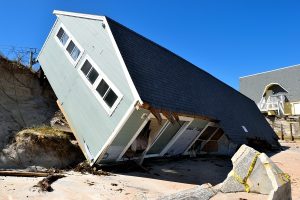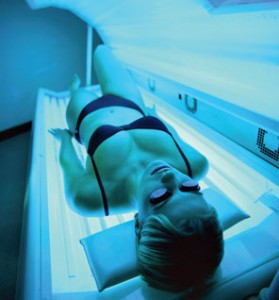We hear a lot about the dangers of hurricanes when they are in a region, but very little regarding health risks after hurricanes. I thought it would be interesting to review all of the health risks in a blog.
Health risks during a hurricane
A lot of the health risks during a hurricane are directly related to the risks from the wind severity, the amount of rain per hour and the physical damage from the hurricane. The excessive wind can uproot trees and they may fall right onto a house. This happened in the beginning of hurricane Florence. The amount of rain that comes down in a short time frame can be astounding. It causes flooding, which together with the high wind speeds can make you lose your footing. There is flying debris, torn away pieces of wood and drywall that can become a hazard to any person. It is a hazard that could kill you right there. It is best to be out of the way of a hurricane, if you can at all. But you need to watch hurricane predictions on the Internet or the news, so you know what is going on long before the hurricane arrives. This gives you enough time to travel away from the danger zone. People who live on islands need to be particularly proactive, so that they get out of harms way in time.
Be safe from floodwaters
If you live in a low-lying area, it is safer for you to leave and go to a shelter before the hurricane hits. Otherwise you end up drowning. Being on top of your house in a hurricane is dangerous as the roof may fly off any minute from the force of the wind. You are also the target of flying debris, wood pieces and other flying objects.
Contaminated water is one of the major health risks after hurricanes
With hurricane Maria in 2018 it appeared in the first few days that only 16 to 18 people had died from the physical effects of the hurricane in Puerto Rico. But in the subsequent weeks and months people died en masse because of infections from contaminated drinking water. It is unbelievable that huge water supplies had been brought in by FEMA following the hurricane Maria, but it was not distributed to the people who needed it. The total death toll is now around the 3000 mark. FEMA calculated this by subtracting 13,000 deaths due to natural causes from the total deaths of 16,000. The difference is about 3,000 deaths, attributable to hurricane Maria.
Providing clean drinking water important
Providing clean drinking water should be the first priority following a hurricane. This will prevent that people get the typical water-born bacterial and viral illnesses following a hurricane.
One patient in Puerto Rico with chronic emphysema was on a breathing machine. The interruption of electricity as a result of hurricane Maria meant his death. Some people are so vulnerable that the interruption of electricity ends their life.
Communicable diseases from floodwaters
The WHO has brought out a fact sheet regarding communicable diseases from floodwaters. People need to be aware that floodwaters are contaminated and avoid them as much as possible. However, they also point out that unless you have bruises or cuts where bacteria from contaminated waters could grow the danger is smaller than generally believed.
Mold from water damage to houses
After hurricane Katrina in New Orleans 2005 there was a lot of mold growth in houses that were flooded. This caused an overwhelming odor that was difficult to cope with. Bleach water removes mold initially until a professional crew can clean it up at a later date. I mention this here because following a hurricane there will not be enough professional people around to help. Mold is particularly devastating for asthmatics and people with chronic respiratory conditions. These people need evacuation from such living environments until the house is clean from molds. Flare-ups of asthma and chronic obstructive pulmonary disease can be deadly. Under normal circumstances people with respiratory problems can manage, but these people are at a severe risk of dying from an aggravation of their underlying conditions. Hurricane Katrina will be remembered for this.
Living in destroyed homes
Often with a direct hit of hurricane the roofs of homes are missing. The hurricane ripped them off and they literally flew away. A home without a roof is prone to water damage from future precipitation. There is the danger of mouse and rat infestation. Birds can enter and partake in the leftover meals. Their droppings may contain contagious bacteria like salmonella causing typhoid fever. Builders work hard and long hours; it can take months or years before life is normal again. It may be wiser to live with a relative for a few months until the house is in livable condition again. When electricity is restored and the water lines are functioning again, there may still be an issue about getting safe drinking water and uncontaminated water to have showers and baths. Also, without proper shelter there are risks of mosquitoes transferring communicable diseases. This happened in the Dominican Republic.
Malaria in the Dominican Republic
In September 2004 Hurricane Jeanne struck the Dominican Republic. Subsequently there was more flooding from heavy rainfalls. The end result was a mini-epidemic of 17 cases of malaria, because the flooded areas gave the mosquitoes more breeding ground to multiply. Fortunately no one died, as all the malaria cases responded to chloroquine and primaquine. But some patients had to be treated in the Intensive Care Unit of a hospital. As already mentioned there are other water born illnesses that can cause diarrhea, vomiting and fever. These people need to get immediate access to a hospital where the medical staff will rehydrate them intravenously. Otherwise they could die.
Conclusion
Hurricanes pose enormous problems for the communities where landfall occurs. Close to the eye of the hurricane are the worst structural damages to properties and trees. But even miles away from that there can be flooding due to excessive winds and rain. Most people are reasonable during the initial phase when the hurricane hits. This means they stay inside so they can protect themselves from the direct impact of the storm. But hurricanes can pull roofs off and people can get hurt.
Illnesses from contaminated water
Later there is a disruption of the electrical supply as well as the water supply. The restoration of the utilities may take days or weeks. Immediately you depend on fresh and clean water supply, and when you run out, there may not be enough fresh water available. Illnesses from contaminated water become a huge problem at that point. This is where a lot of mortality comes from in the aftermath of a hurricane.
If you can, it is wiser to escape this all by visiting a relative far away from the hurricane area. In this case you must leave well in time before the hurricane hits. You can check with the authorities when it would be safe to return home. At least you know that you have survived. Everything else can wait. You will gradually take care of it. But it may take a long time for things to return to normal.








